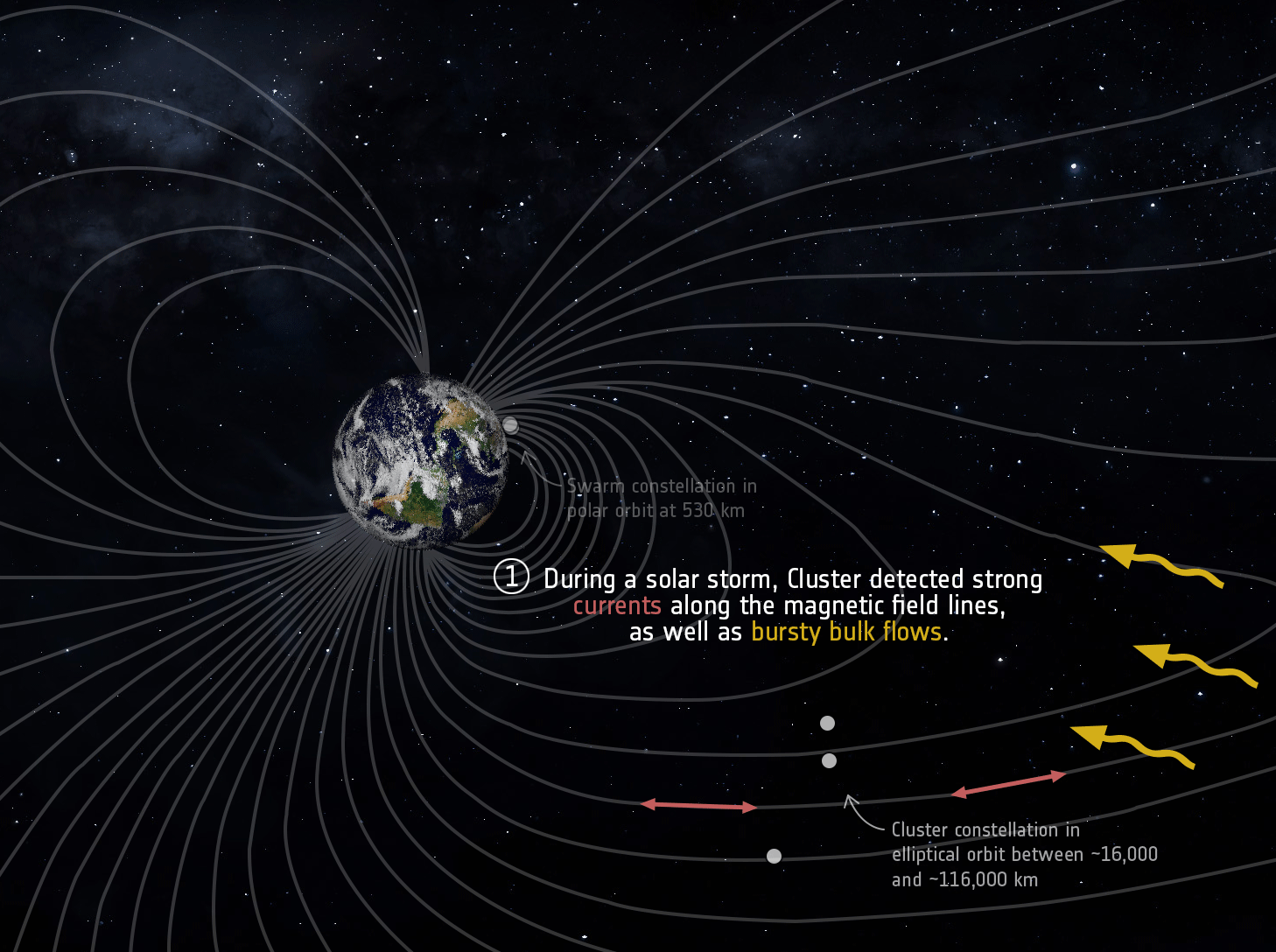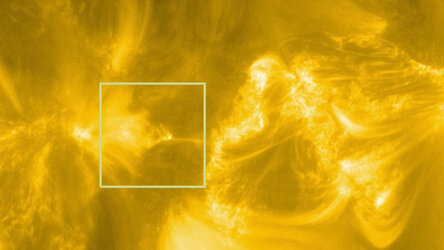
Magnetic reconnection in Earth's magnetosphere
This animation shows the sequence of events that give rise to magnetic reconnection in Earth's magnetosphere and, subsequently, to bright aurorae close to Earth's polar regions.
The structure of Earth's magnetosphere is sensitive to variations in the solar wind, the stream of electrically charged particles released by the Sun. When the solar wind changes in such a way as to invert the orientation of the interplanetary magnetic field, the tail of the magnetosphere gets compressed and magnetic reconnection may take place there.
Two flows of plasma with anti-parallel magnetic fields are pushed together, flowing in from above and below and creating a thin current sheet. As plasma keeps flowing towards this sheet, particles are accelerated and eventually released via two symmetric jets. This creates an X-shaped transition region, with a 'separatrix' region that divides the inflowing plasma from the outflows of highly energetic particles.
As a result of magnetic reconnection, two powerful streams of highly-energetic plasma are launched both towards Earth and in the opposite direction. This is one of the mechanisms through which plasma particles can infiltrate the upper layer of Earth's atmosphere – the ionosphere – producing breathtaking aurorae but also disturbing telecommunication networks and GPS.






